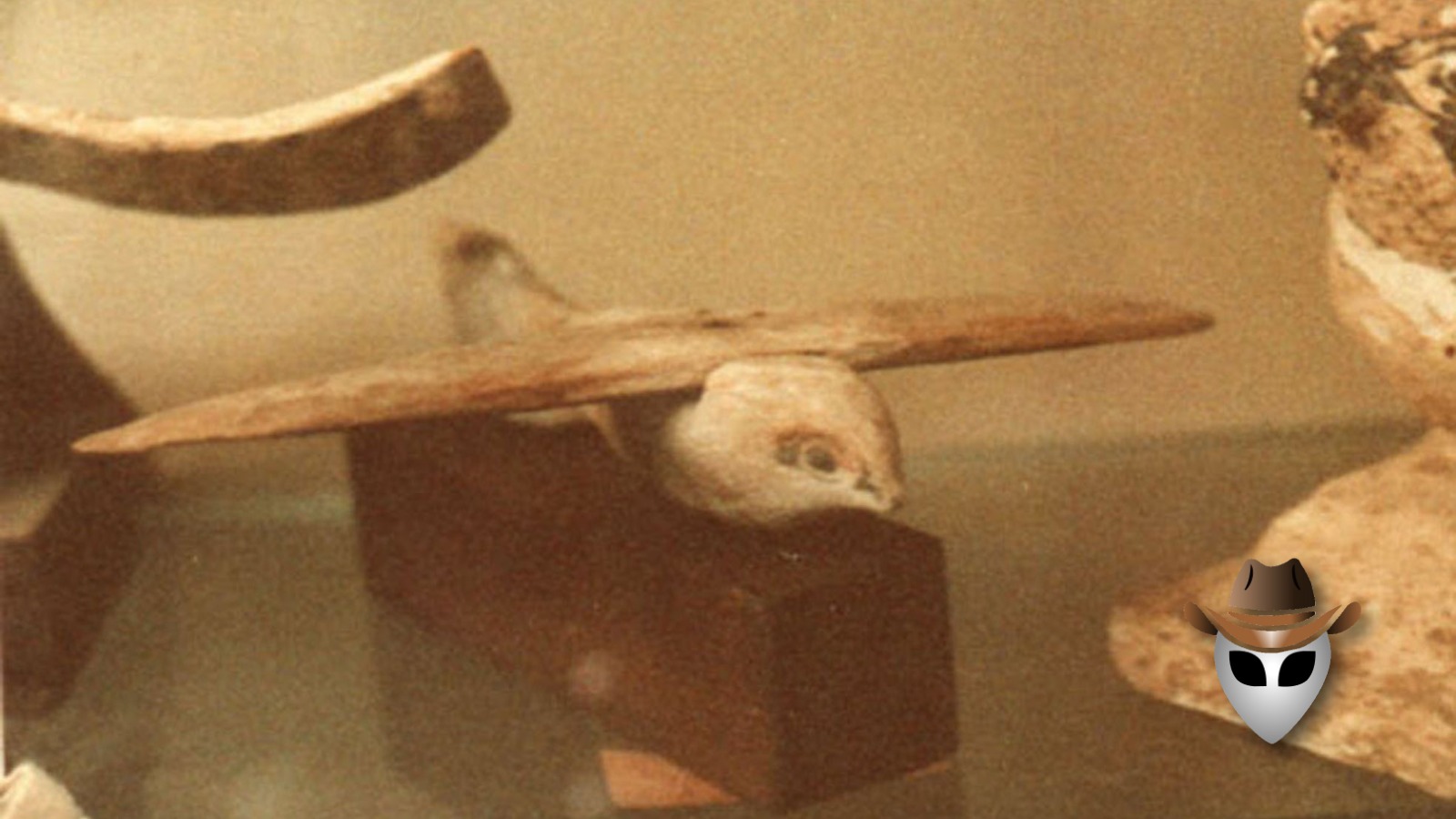The Saqqara Bird, a small wooden artifact discovered in an Egyptian tomb in 1898, has fascinated and been debated among historians, archaeologists, and aviation enthusiasts. Found in the tomb of Pa-di-Imen in Saqqara, this bird-shaped object, dating back to around 200 BCE, has spurred various theories regarding its purpose and design. One of the most intriguing and controversial theories is that the Saqqara Bird represents an ancient model of an airplane.
Evidence in Favor of the Airplane Theory
Aerodynamic Design: Proponents of the airplane theory argue that the Saqqara Bird exhibits several features that are reminiscent of modern aircraft. The artifact has a fuselage-like body, a vertical stabilizer, and wings that are straight and angled slightly backward, similar to those of a glider. Some researchers, such as Dr. Khalil Messiha, have suggested that the design could indicate an understanding of aerodynamics, potentially making it a prototype of an ancient flying machine.
Experimental Models: To test the airplane hypothesis, various researchers have built scale models of the Saqqara Bird and subjected them to aerodynamic tests. Some of these models have demonstrated an ability to glide, supporting the idea that the artifact could represent an early understanding of flight principles. For example, Dr. Messiha’s experiments in the 1960s showed that with slight modifications, the model could achieve stable flight.
Historical Context: Ancient Egypt is known for its advanced knowledge in various fields, including engineering, architecture, and mathematics. The construction of the pyramids and other monumental structures showcases their sophisticated technological capabilities. It is conceivable, therefore, that they could have experimented with flight, even if only at a conceptual level.
Symbolic Representation: In ancient Egyptian culture, birds were often associated with the sky and the gods, particularly the falcon god Horus, who was linked to the sun and the sky. The Saqqara Bird’s design and placement in a tomb could symbolize the soul’s journey to the afterlife, using the bird as a metaphor for flight and ascension.
Evidence Against the Airplane Theory
Lack of Historical Evidence: Despite the intriguing design of the Saqqara Bird, there is no concrete evidence to suggest that ancient Egyptians had the capability or knowledge to build and fly aircraft. The absence of additional artifacts, texts, or illustrations supporting the development of flight technology in ancient Egypt weakens the airplane hypothesis.
Ornamental Interpretation: Skeptics argue that the Saqqara Bird is more likely to be an ornamental object, possibly a toy or a ceremonial artifact. The object lacks essential features necessary for powered flight, such as propulsion systems or mechanisms to control lift and stability. Its simplistic design is consistent with other known artifacts used for religious or decorative purposes.
Misinterpretation of Features: Critics of the airplane theory point out that certain features of the Saqqara Bird, such as its tail, might be misinterpreted. The vertical stabilizer-like structure could simply represent the tail feathers of a bird, rather than an aerodynamic component. Additionally, the wings are not shaped like those of a functional glider, and the absence of a horizontal stabilizer further challenges the aircraft theory.
Cultural and Technological Gaps: The development of flight technology requires a progression of scientific understanding and practical experimentation. There is no documented evidence of such a progression in ancient Egyptian culture. The leap from building monuments and engaging in basic mechanical engineering to constructing a functional aircraft is significant and unsupported by the archaeological record.
The Saqqara Bird remains an enigmatic artifact, sparking curiosity and debate about the technological capabilities of ancient Egyptians. While its design bears some resemblance to modern gliders, the lack of supporting evidence and the simplicity of the artifact suggest that it is more likely to be an ornamental object rather than a prototype of an ancient airplane. The mystery of the Saqqara Bird highlights the fascinating interplay between historical artifacts and modern interpretations, reminding us of the richness and complexity of ancient cultures. Whether viewed as an early experiment in flight or a symbolic representation of the soul’s journey, the Saqqara Bird continues to be a subject of debate.
Share Your Thoughts!
What do you think? Is the Saqqara Bird a model airplane, or just an ornament? Share your thoughts in the comments below!
